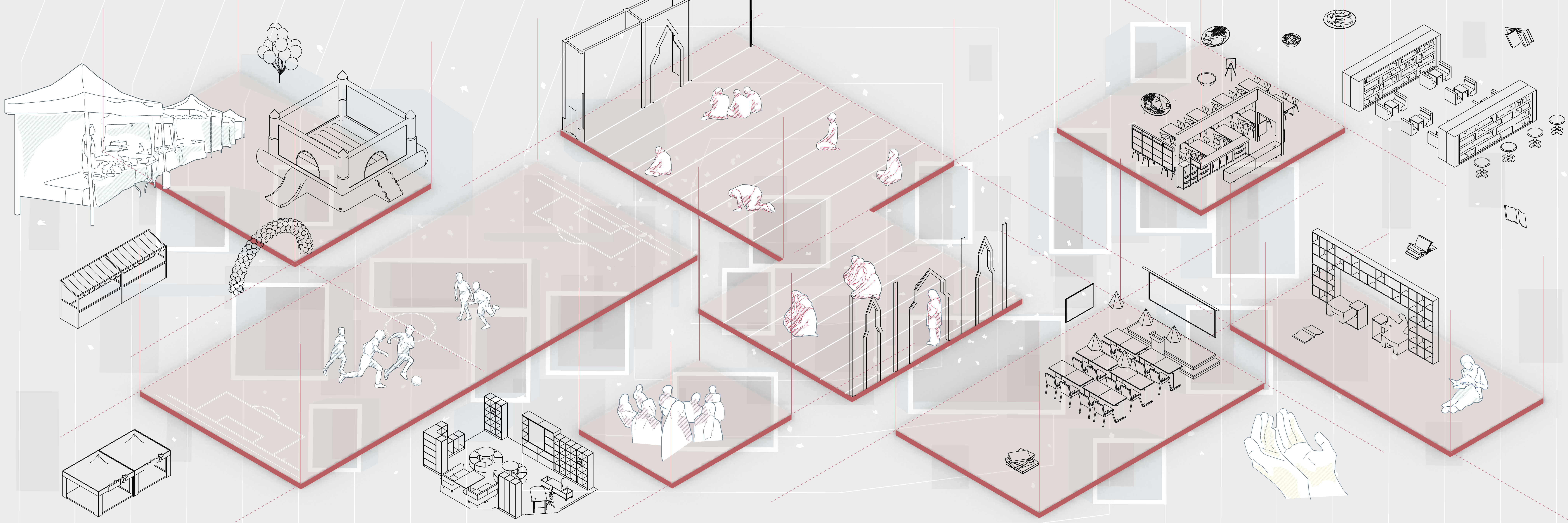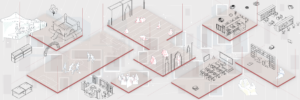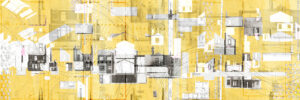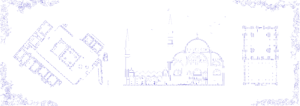Mosques as Community Centres: A Design Approach
Mosques in the UK have long played an active role in their communities, providing a place for support, belonging and guidance for the Muslim community. However, there is also potential for mosques to maximise their use and the services they offer for their local neighbourhoods. Such a space should be thoughtful and sensitively designed for present and future users to be at the forefront of the design approach. Therefore, how can mosques connect further with their communities?
Alongside, a mosque’s purpose as a prayer space, introducing new programmes is a way to provide more for the community. Thorough research on the people that make up the community can inform which programmes to offer. This is not limited to but can include educational facilities, providing mental health support, charity distribution or function rooms for special occasions and lectures.
An understanding of the user can then shape the spatial arrangement, sequencing and configuration of a mosque. For instance, tall floor-to-ceiling heights and acoustic insulation may be required for multipurpose function rooms. Classes with movable partitions can provide flexibility to accommodate smaller intimate classes, one-to-one tutorials or larger lessons. Different types of seating arrangements and furniture can accommodate a range of gatherings. Learning spaces can benefit from an abundance of natural light, creating an atmosphere more enjoyable to be in. These are just a few ways where design decisions are informed through considering all the ways a space can be used.
Ensuring mosques are designed to serve their communities is through regular consultations and community engagement. An initial discussion during the feasibility or concept design phase assists to build a brief, outline the key programmes and gain a thorough understanding of what the users want and need. A regular dialogue with local residents throughout each stage of the design process from conception to construction ensures the design responds to their requirements.
Aiming for longevity is another element of design for a mosque to create a space that can grow with generations, and be welcoming, engaging and vibrant. This is influenced through material choice, structure and sustainability. ventilation and access to daylight. Its role as a community centre extends to caring for the environment through minimising carbon footprint and integrating sustainability through considering energy efficiency, renewable energy or water efficiency. In this way, the mosque should have finishing materials which are easy to clean, low maintenance and fixtures that can be sourced easily if replacements are required.
For the Muslims, Islam is a way of life and transcends into every aspect of their lives. There is an opportunity for these mosques to be customised and curated for their specific uses while also maintaining flexibility that enables them to adapt. Through providing an environment for users to learn, grow together, gain skills and feel inspired, this, in turn, will nurture the wider Muslim community.










